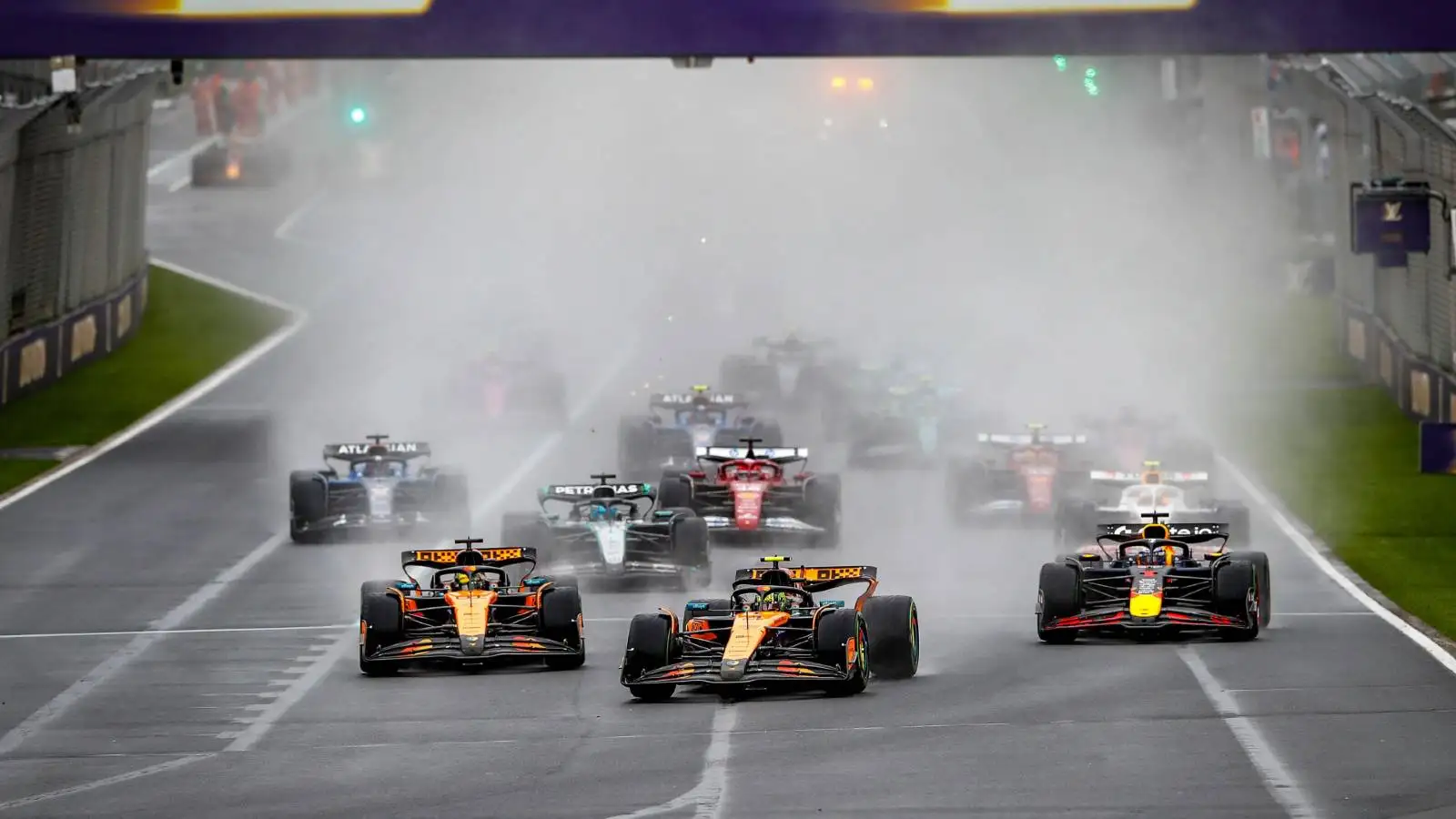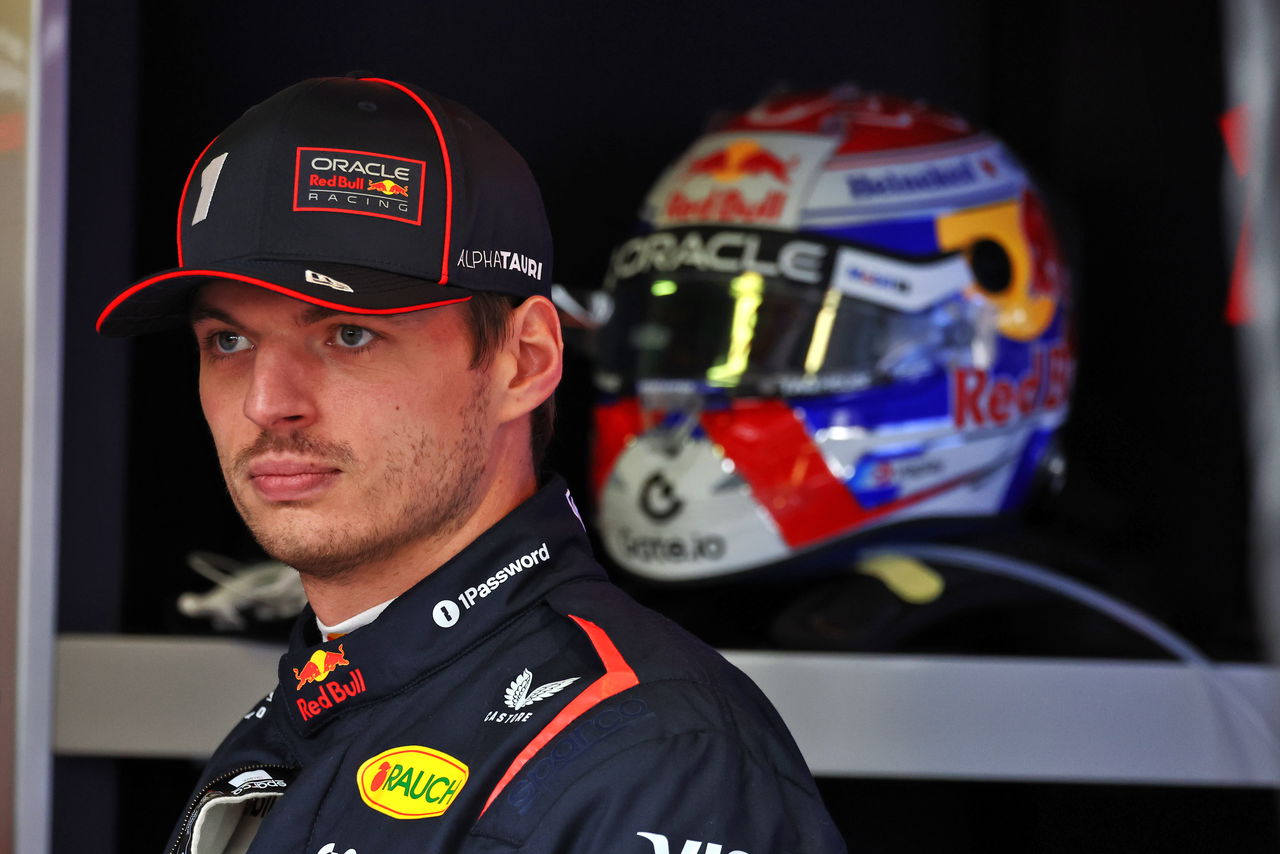The FIA has confirmed that a new technical guideline will be introduced on time for the Chinese Grand Prix this weekend in Shanghai.
It is amid the current debate around so-called Flexi wings at the start of the F1 2025 season.
Fia announced further Flexi-Wing Klemdown for the Chinese Grand Prix
After Flexi Wings had appeared as a hot topic in 2024, the F1 administrative body adopted a solid position in the first months of 2025.
Last month it turned out that the FIA will implement stricter Load-Deflection tests to the front wing of the Spanish Grand Prix, the ninth race of F1 2025.
In anticipation of the seasonal Australian Grand Prix last weekend, teams have since been informed about an update of the TD034 of Technical Directive, which instructed them to install a backward -facing housing for a camera for a camera for the FIA to check the rear wing bending in Albert Park in Albert Park.
Analysis: Australian Grand Prix
👉 Australian GP conclusions: Norris 2.0, The Max Factor and why Hamilton needs time
👉 Australian general practitioner reviews: Who mastered the storm in Melbourne?
All cars were found to meet the deflection limits in Australia.
However, the FIA has found ‘enough grounds’ to introduce a ‘harder test’ during the second race of the season in China with a focus on the upper rear wing.
The change stipulates that the final gap of the rear wing ‘may not vary’ with more than 0.5 millimeters when 75 kilograms of vertical load is applied to the main plane rear wing, stated in the F1 2025 regulations, with a tolerance of 0.25 mm.
It leaves the 10 teams, which were informed on Monday of the change on Monday, confronted with a fight to prepare their cars to meet the new requirements before the Chinese Grand Prix this weekend.
An FIA statement was: “As stated earlier, between the end of the 2024 season and the start of the 2025 season, the FIA has exercised the authority that is granted on the basis of Article 3.15.1 of the technical regulations to introduce new or more challenging Load-Flection tests for the Balk 9, Spanish and the Balkeus), and Race and the Balkeus), and the Balk and, and the Balkeus),, rear wing and the beam rear wing.
“In addition, the FIA has asked the teams to use cameras in free practice sessions to check the on-track deformations that the cars exhibit during the Australian Grand Prix.
“After analyzing images of the rear wing disturbances combined with the static deflections measured in the FIA garage in Melbourne, the FIA concluded that there are sufficient grounds for a stricter test that is introduced from the upcoming Chinese Grand Prix on the upper rear wing.
“More specifically, Article 3.15.17, introduced in 2025, states that if 75 kg vertical load is applied to both extremity of the Hoofdplane rear wing, the distance between the mainplane and the flap (also known as” lock gap “) may not vary more than 2 mm with more than 2 mm.
“From the upcoming Grand Prix in Shanghai, this limit will be lowered to 0.5 mm. Due to the short notification for Shanghai, only a tolerance of 0.25 mm is added to this new limit.
“The teams were informed of this revised test at the beginning of Monday, March 17.
“The FIA wishes to further confirm that during the Melbourne event all tested cars against the requirements of Article 3.15.17 were tested and found to satisfy, therefore all cars racing in Melbourne were considered legally.”
Read next: The scary data behind McLaren Rocket Ship


